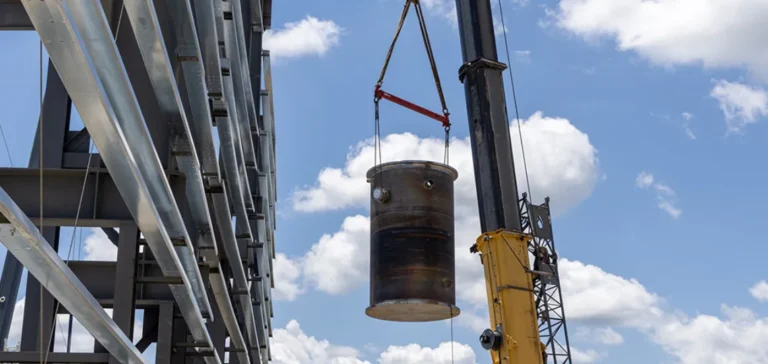Kairos Power has announced the installation of the vessel for its third test prototype, Engineering Test Unit 3.0 (ETU 3.0), at its Oak Ridge site. This vessel, measuring 4.2 metres in height, will be used to test manufacturing and construction techniques as part of the Hermes reactor design, which is currently under development at the same location. The project is supported by the Advanced Reactor Demonstration Program of the US Department of Energy (DOE).
A prototype to optimise construction
The ETU 3.0 vessel is not intended for nuclear energy production, but will be used to pilot advanced manufacturing processes and improve the efficiency of future Kairos Power commercial reactors. It was manufactured in partnership with Cambridge Vacuum Engineering and University of Sheffield AMRC using electron beam welding technology, which allows for shorter welding times compared to conventional arc welding techniques. Barnard Construction is overseeing the integration of the vessel within the facility, with the goal of streamlining construction procedures and ensuring compliance with the quality standards required for Hermes.
A key milestone in the Hermes programme
The Hermes programme is the first Generation IV reactor to receive a construction permit from the United States Nuclear Regulatory Commission. This low-power prototype aims to demonstrate the commercial viability of the high-temperature fluoride salt-cooled reactor developed by Kairos Power. According to Chief Technology Officer and co-founder Edward Blandford, ETU 3.0 will also serve as a training platform for operators and as a test site for remote handling and maintenance equipment destined for Hermes.
The project schedule is structured within a milestone-based agreement with the DOE, designed to reduce the risks associated with the development of advanced nuclear technologies. The ETU 3.0 vessel will also host pre-assembly, testing and training operations for equipment modules prior to their final deployment on Hermes.
Industrial validation and commercial prospects
Hermes will use a TRISO fuel pebble bed technology, combined with fluoride molten salt cooling, to demonstrate the ability of this approach to produce nuclear heat at a competitive cost. Kairos Power Chief Executive Officer and co-founder Mike Laufer stated that DOE support through the Advanced Reactor Demonstration Program enables successive iterations and the acquisition of the experience needed for industrial implementation of these technologies.
The ETU 3.0 prototype reactor, which also serves as an operator training centre and validation platform for Hermes modules, marks a step forward in Kairos Power’s strategy for deploying advanced nuclear solutions. According to the DOE, Hermes represents a major milestone in the development of innovative nuclear technologies in the United States.






















